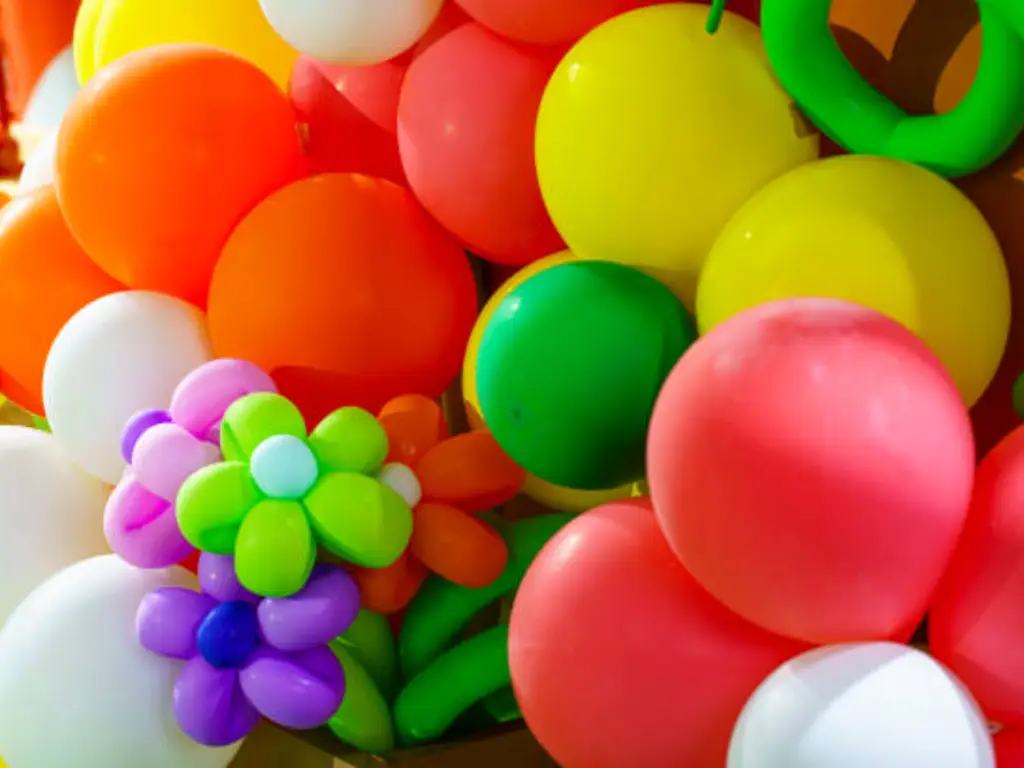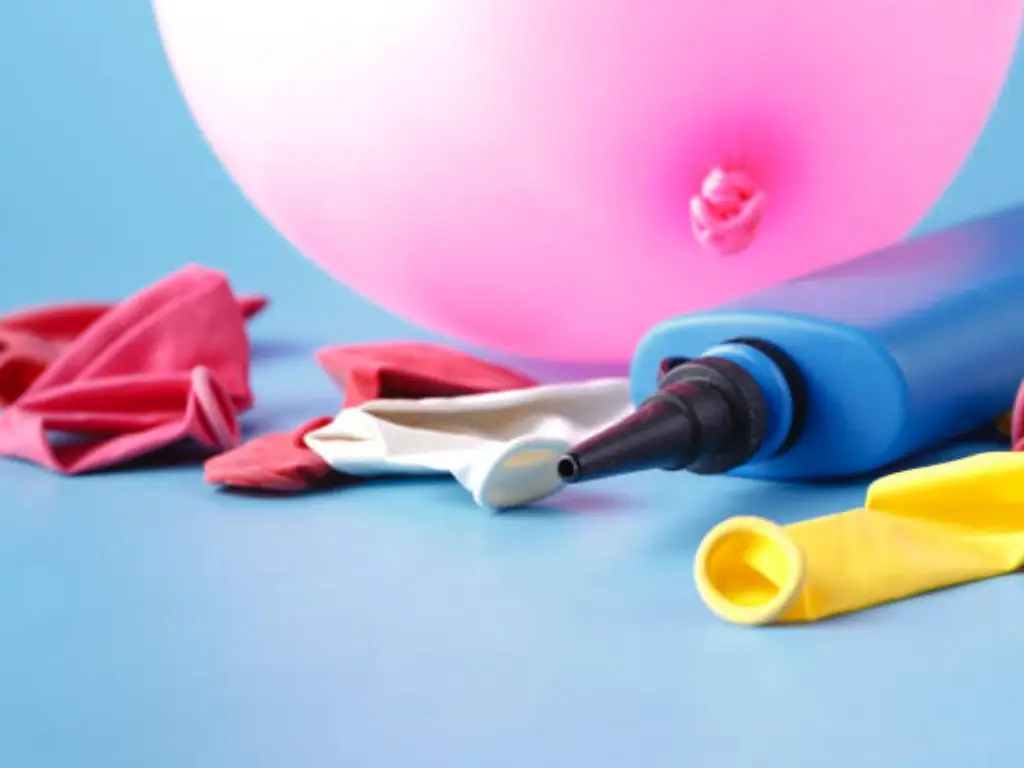Preface
Balloons are not only the colorful decorations at the birthday parties, but they are interesting objects made from different materials which are chosen for their specific characteristics. From the simple latex balloons that are commonly used in birthday parties to the shiny mylar balloons that are used in store displays, the materials used in the manufacturing of balloons have changed over the years. This blog will discuss the types of materials used in the production of balloons, describe the entire process of manufacturing, and analyze the ecological characteristics of the materials used. If you are organizing a large party or just wondering what balloons are made of, you will find this information quite useful.
What Materials are Used in Balloon Production?

The materials that are used in the production of the balloons have evolved from animal bladders and intestines to the modern polymers and coatings. Each material has its own benefits, for instance, latex provides bright colors while nylon is very durable. Below is a breakdown of the most common materials used in modern balloon manufacturing and their characteristics, strengths, and weaknesses.
Mylar
Polyester film known as Mylar is used in the production of shiny, metallic balloons that are strong and do not lose air easily. These balloons are commonly known as foil balloons and are preferred because they can retain helium for a longer period than the latex balloons. Mylar is also characterized by the availability of bright color shades and the possibility of applying complex patterns on it. However, the material is non-biodegradable and this has been a major issue concerning the environment, hence not being as sustainable as it could be.
Latex
Natural latex balloons are the most popular type, which are produced from the natural latex sourced from rubber trees. They are well known for their flexibility and can be stretched to different forms. Latex balloons are eco-friendly since they decompose easily unlike Mylar balloons that take a long time to degrade. However, they can trigger allergic reactions in some people because of the latex sensitivity. However, latex is still widely used in the production of balloons because of its flexibility and the availability of a wide variety of bright colors.
Nylon
Another synthetic material used in the production of balloons is nylon especially for balloons that are used in areas that they are likely to be exposed to more abuse. It is typically used in larger, more heavy duty balloons that are typically used in parades or large events. Nylon balloons are more durable and cannot be easily popped but they are not used for small, regular balloons because they are expensive and slightly heavier.
Chloroprene
Chloroprene is a kind of synthetic rubber that has high degree of strength and is resistant to the environmental factors. It is commonly used in specialty balloons that require longer life and better elasticity of the material. Chloroprene balloons do not burst as easily as latex balloons, and they do not degrade quickly in sunlight or fluctuating temperatures, which is perfect for outdoor occasions. However, similar to Mylar, chloroprene is not biodegradable, which may be a disadvantage for environmentally conscious consumers.
Polyurethane
Polyurethane balloons are characterized by high mechanical strength and flexibility. This material is used in balloons that need to be stretched to a high extent without getting a chance to tear such as those used in balloon art or in special effects. Polyurethane is also immune to oil and chemicals, which makes it suitable for use in industries. However, these balloons are more costly to manufacture, and therefore, are not very useful in normal applications.
Aluminum-coated plastic
This material is widely used in the manufacture of balloons that need a metallic look. These balloons are coated with aluminum which gives them a shiny and reflective surface. This material is widely used in branding and promotional items because of its smooth finish and its capacity to retain helium for a longer time. However, like Mylar, aluminum-coated balloons are non-recyclable and cause environmental pollution when not disposed of appropriately.
Rubber
Rubber balloons also known as rubber balloons are made from natural rubber latex. This material was first used by an Englishman Thomas Hancock and later improved by Professor Michael Faraday, it has great elasticity and durability. Rubber balloons can expand to a large extent and can regain its original shape and size and hence they are used in many ways, like toy balloons and other industrial uses. However, natural rubber used in the production of balloons is sensitive to environmental concerns such as UV light and ozone, which leads to the deterioration of the balloons.
Plant-based polymers
Biopolymers derived from plants are a relatively new material in the balloon market, which can be considered as an environmentally friendly material compared to synthetic ones. These biodegradable polymers are obtained from renewable sources and have a shorter degradation time in the environment. Although not widely used at the moment, plant-based balloons are a promising innovation that can help decrease the negative effects of balloon production on the environment and provide consumers and businesses with a more sustainable option.
How to Choose the Best Balloon Material for Your Event?
| Event Type | Recommended Balloon Material | Why Choose This Material? |
| Birthday Parties | Latex or Mylar | Latex offers a wide variety of colors and shapes, perfect for creating a festive atmosphere. Mylar is ideal for creating lasting decorations with printed designs. |
| Outdoor Events | Chloroprene or Nylon | Chloroprene is highly resistant to UV rays and temperature changes, while Nylon provides durability and puncture resistance, making them perfect for outdoor use. |
| Corporate Promotions | Mylar or Aluminum-coated Plastic | These materials allow for high-quality printing, ensuring your brand’s logo and message stand out. They also hold helium longer, making them great for long-lasting displays. |
| Eco-friendly Gatherings | Latex or Plant-based Polymers | Latex is biodegradable, making it a good choice for environmentally conscious events. Plant-based polymers are a newer option that offers sustainability without sacrificing quality. |
| Parades and Large Displays | Nylon or Polyurethane | These materials are incredibly durable and can be used to create large, eye-catching displays that withstand the elements and remain intact throughout the event. |
| Balloon Art and Sculptures | Polyurethane or Rubber | Polyurethane provides the flexibility needed for intricate designs, while rubber offers excellent elasticity, allowing for complex and creative balloon art. |
Whether you need durable Mylar or eco-friendly latex, choosing Nicro as your balloon supplier ensures that each balloon is crafted from the highest quality materials, personalized to meet the unique demands of your event.
The Manufacturing Process of Making Balloons

The production of balloons is quite an interesting process and it is also complex since it entails several steps to ensure that the balloons are of high quality and standard. Here is a step by step process on how balloons are made from raw materials to the final product.
Material Preparation: The process starts with the preparation of the raw materials which are then subjected to various processes. For latex balloons, natural latex is obtained from the rubber tree, usually sourced from Malaysia. The latex is then treated with a number of chemicals to enhance its strength, flexibility and appearance. In the case of Mylar balloons, the polyester film is coated with a layer of aluminum to give it the metallic look.
Molding and Shaping: The next step is to shape the balloons. For instance, in the case of latex balloons, molds in the form of a balloon are immersed in the liquid latex solution. These molds are usually made of stainless steel and are well crafted to give the right shape and size. The latex forms a thin layer on the mold and then it is allowed to dry to give the final shape of the mold.
Coagulation and Curing: Once the latex has been applied on the molds, a coagulant is added to help in the process of coagulation. This step makes sure that the latex sticks to the mold in the right manner. The balloons are then taken to an oven to cure the material, which makes it more elastic and strong.
Coloring and Finishing: After that the balloons are coated with dye to get the final color of the balloons. This step is important in order to guarantee that the balloons have bright and attractive colours for the consumers. Some balloons may also be subjected to other coating treatments to give them a shiny surface or make them more resistant.
Quality Control: The balloons go through a series of quality control checks before they are packaged. This involves inspecting the surface of the balloon for such things as air bubbles, holes or any other imperfections that may hinder the performance of the balloon. Every balloon is checked to make sure that it is of the right size and has the right elasticity and strength.
Packaging and Distribution: The last stage of the process is the packaging stage. The balloons are then popped, checked for the final time and then packed ready for distribution. They are usually baled by size and color for easy transportation to stores and event organizers across the globe.
Want to inflate balloons safely? Read How to Use a Balloon Pump for Parties and Events.
Environmental Impact of Different Balloon Materials

The environmental effects of the balloons depend on the material used in making the balloons. Latex balloons, which are made from natural rubber, are environmentally friendly since they decompose over time, but they are still dangerous to wildlife during the decomposition period. Mylar and synthetic balloons are non-biodegradable and can remain in the environment for a long time causing environmental pollution. These materials can take years to decompose and in the process pollute the environment and affect animals especially marine animals. With increasing awareness of the impact of balloons on the environment, there is a trend towards more environmentally friendly materials, such as plant-based polymers, to minimize the negative effects of balloons.
Conclusion
The future of balloon material is in the balance between the development of new materials and the preservation of the environment. With increasing awareness about the environment, there is a rising need for green solutions to conventional balloon materials. The balloon industry is coming up with new materials such as plant based polymers which hold the potential of being environmentally friendly without compromising on the characteristics that make balloons so endearing.
In the future years, there will be more innovations in this field, where manufacturers will try to develop new ways of making balloons that are biodegradable and environmentally friendly but at the same time are strong, brightly colored, and suitable for any occasion. Some of the companies such as NICRO are already setting high standards in the selection of materials as well as constantly searching for ways to improve in order to meet the needs of the ever-evolving market.
Discover unique birthday decoration ideas beyond balloons for your next celebration. Click Theme-Focused Birthday Decoration Ideas to Inspire for inspiration.
Craft Your Unique Balloons with NICRO’s Quality

In as much as the production of quality and customized balloons is concerned, NICRO is the best ballon supplier. NICRO has been in business for over 11 years in the party supplies business and has gained experience in designing and manufacturing balloons that are safe and of high quality. This commitment to using high-quality materials such as FDA-approved natural latex and SGS-certified Mylar ensures that each balloon is not only visually appealing but also safe for use in any setting.
NICRO provide various shapes of balloon with uvibrant color options and solid material. If you are interested in ordering latex balloons for a birthday or Mylar balloons for a corporate event, NICRO has many options for you. Professional design, R & D and marketing teams guarantee that you get the best party supplies through constant innovation. Outstanding experience enables NICRO to develop saleable products after conducting market analysis and drawing from experience in the sector. The primary customization options, backed by a stable supply chain, make customization easy and guarantee you the best tailored party supplies. The quality control measures that NICRO implements from the semi-finished to the finished products guarantee that every balloon manufactured meets the customer’s expectations.
FAQs
How Long Does It Take For Balloons To Deflate?
The duration of the balloon depends on the type of material used in the making of the balloon. It is common to have latex balloons to last between 12 to 24 hours when they are filled with helium but if you use hi-float it can last for several days. Mylar balloons, on the other hand, can last for weeks, sometimes even months because helium cannot easily escape through the pores of Mylar.
How to Avoid the Situation Where Balloons Pop and Deflate in a Short Span of Time?
For further longevity of balloons, one can apply hi-float for latex balloons as it seals the inside and thus reduces the rate of helium leakage. Balloons should also not be exposed to direct sunlight as this will cause helium to escape faster and also cause the latex to degrade.
What Impact Does Weather Have on Balloon Fabrics?
This is because the performance of the balloon is affected by the weather conditions. Latex balloons are sensitive to heat and direct sunlight, which makes them to burst due to expansion while cold temperatures make the balloons shrink and lose buoyancy. Temperature changes do not have a strong impact on Mylar balloons but they can be damaged by extreme temperatures. Wind and rain can also affect balloons especially those made from latex since they become brittle and can easily burst.




